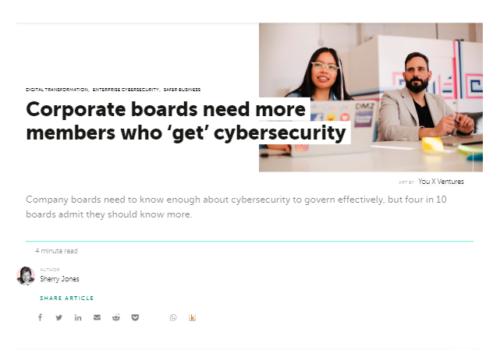Text transcription
Why the ‘Old Brain’ Struggles with Big Data
JR Reagan
October 21, 2014
How we can all learn to stop worrying and love the information age.
In an innovative effort to help more of their undergraduates complete their degrees, over 150 U.S. universities are currently applying predictive analytics to massive stores of historic student performance data to better understand the qualities and behaviors that correlate with student success. With this information, the schools hope to identify those students “likely to fail” certain courses, and alert their professors to the risk. Professors can then provide meaningful interventions aimed at helping these students succeed.
Though most would agree that improving student outcomes is a laudable goal, this specific use of big data and predictive analytics has come under fire, for conflicting reasons. Professors, some argue, might treat flagged students differently. But isn’t that the point? How else would they help these individuals succeed?
Others worry that instructors might pay so much attention to “likely to fail” students that they would neglect the rest. Still others fear professors will do just the opposite – form biases against the very students who most need help.
From social media to search engine ads to hiring to transportation, big data is spreading like a great umbrella over virtually every aspect of our lives. Any change this dramatic is bound to stimulate debate and even a measure of fear, and the fast-growing availability of very personal data compounds concerns. What was once considered private – our whereabouts at any given moment, our shopping preferences, our reading and viewing habits, our grades – now goes into that vast repository known as the “cloud,” to be sifted and sorted and used and shared.
“Old Brain” vs. New Thinking
At its best, big data serves as a tool that can enhance our lives in innumerable ways we haven’t even yet considered. So why do so many oppose it?
Fears about big data – especially during these early days – often stem from purely hypothetical situations. People’s gut reactions tell them that information about themselves or their loved ones, collected and disseminated, is bound to be used for evil rather than good.
But how valid are their concerns? Author and professor Jim Davies has an interesting theory about reality and intuition. The human brain, he says, comprises two realms: the “old brain” in the back, which produces impulses and instincts that help us to survive – this is where intuition originates – and the “new brain” in the front of the head, which we use to control those impulses.
The problem is that, sometimes, the two conflict. For example, we might crave fast food even while knowing it’s bad for us. Or we might feel fear when standing on top of the Empire State Building even though we know we’re not going to fall.
Could it be that our fear of big data emanates from our old brains? What exactly are we really afraid of? And, just as the old brain interprets images in art and film as being real – this is why we feel afraid when watching horror movies – perhaps it conflates our hypothetical big data fears with reality.
Making Data Work for Us
Using our rational minds, we can identify many positive uses of big data that have the potential to improve all our lives. Wouldn’t we rather see advertisements for products and services relevant to us than for things we don’t care about? Surely we want to know when a serious illness or disease is prevalent in our own community. And if our kids are struggling to succeed in school at any age, we certainly want them to receive all the help their teachers and administrators can provide.
Data is, after all, a tool with enormous possibilities to change our lives for the better. Rather than spend our energy swimming against the data tide – consumed by hypothetical fears that big data might be used against us – why not dream instead of the myriad of ways we can make it work for us, even as we vigilantly monitor its usage to weed out those applications that truly represent a threat?
Project Details
I worked as Dr. J.R. Reagan’s ghostwriter for more than four years, first when he was Chief Innovation Officer at Deloitte and then, starting in 2014, when he became the company’s Global Chief Innovation Security Officer. A brilliant thinker (and a philosophy major in college), he brought a fresh perspective to technical topics that I found so stimulating! This article is a rewrite of a speech I wrote for him to present at a major conference.
Client: J.R. Reagan/Deloitte
Format: Article







